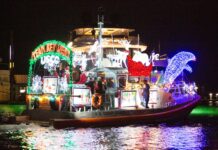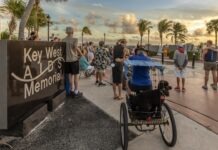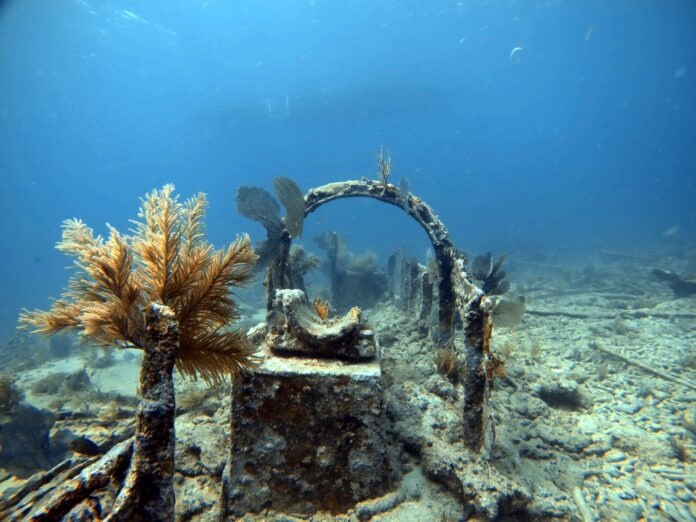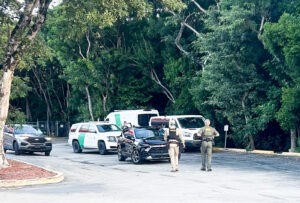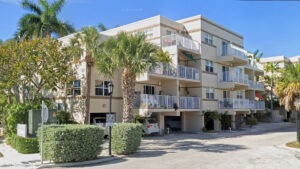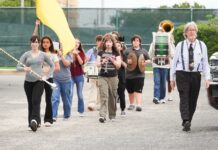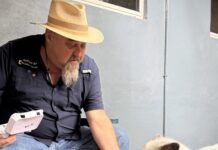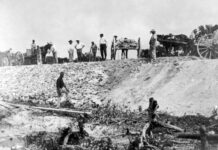By Thomas Scott
Editor’s note: This is the final in a two-part series on the City of Washington steamship.
Several months following the disaster, after the outbreak of the Spanish-American War, the City of Washington was again called upon to serve the country, this time as a troop transport, carrying American soldiers into battle against Spain during the invasion of Cuba. The ship was under charter to the U.S. Army from April to September 1898.
Today, a portion of one of the Maine’s masts, along with her broken bell, remains as a memorial at Arlington National Cemetery, along with the remains of 165 of her crew. Twenty-four more – 17 unidentified – are buried at Key West, where a second memorial site was built, albeit without a mast section. A concrete monument is inscribed, “In memory of the victims of the disaster of the U.S. battleship ‘Maine’ in Havana Harbor Feb. 15, 1898, Erected by the citizens of Key West, Fla.” The remainder of the casualties were most likely unrecovered.
History has not been as kind to the City of Washington. Although well-documented, her involvement in the Maine tragedy has been largely passed over in the history books. No monuments mark the passing or the actions of the heroic crew on that dark night so long ago.
After the war, the City of Washington continued to serve on the New York-to-Cuba route. During the next several years the ship safely carried thousands of American tourists to the newly liberated island nation. On Aug. 7, 1905, the ship was reported to have grounded on Triumph Reef off Miami but was safely refloated with the aid of the wrecking schooner Two Brothers and nine other wrecking vessels.
In 1908, the steamer, now old and outmoded, was removed from service and laid up at Brooklyn, New York. On June 9, 1911, the steamship was sold to the E.F. Luckenbach Company of New York. The superstructure and machinery were removed and the ship was placed into service as a schooner-barge. Although the ship retained masts and rigging, it was unable to sail on its own, and was towed into ports where it had once proudly steamed. As a barge, the displacement was listed as 2,410 tons. The primary cargo was coal.
In early July 1917, the City of Washington, under the command of Capt. McKay with a crew of five, left Norfolk, Virginia under tow for Port Tampa, Florida to load phosphate. According to notes found in the files of the Atlantic Mutual Insurance Company, the City of Washington, along with the barge Seneca and the tug Luckenbach No. 4, ran aground on Key Largo’s Elbow Reef on July 10, 1917.
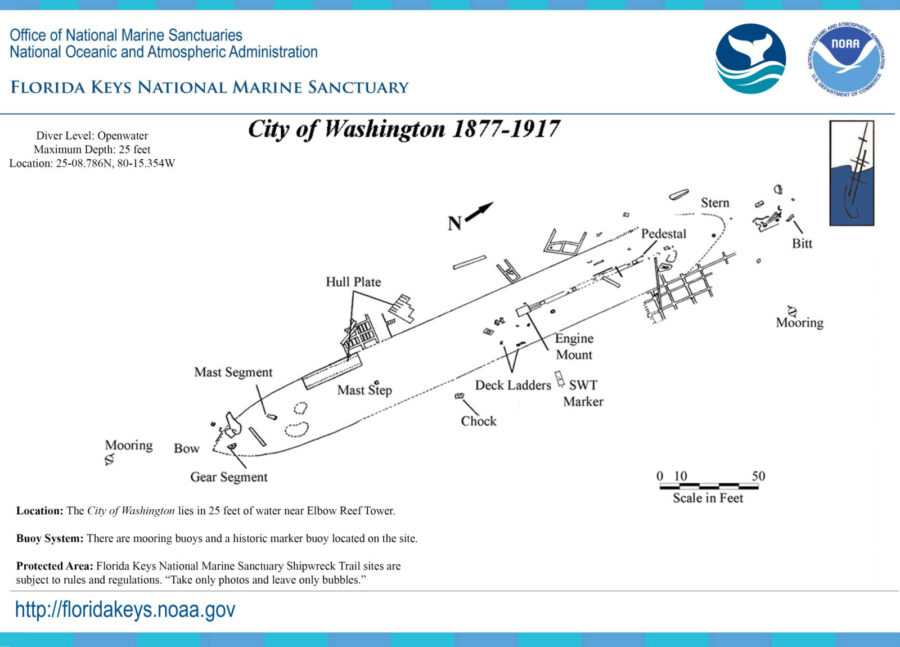
On July 14, the City of Washington broke apart on the reef. The ship is said to have become “a total loss in few (sic) minutes.” The long and distinguished career was at its end. The crew was rescued by the vessels Halifax and Magnolia. The Luckenbach No. 4 and Seneca were refloated and arrived safely at Key West on July 15. In a newspaper article describing the City of Washington’s final loss, 19 years after the U.S.S. Maine disaster, there is no mention of her involvement.
The wreck of the City of Washington lies on the northern end of the Elbow Reef, between mooring buoys E9 and E10. On a calm, clear day the outline of the hull is easily seen from the surface; the massive size and still graceful lines recall former glories.
Time, like history, has also not been kind to the City of Washington. Although the ship’s outline survives, the wreck is badly broken up. Large sections of the hull and deck plating are scattered throughout the area. Moray eels now inhabit the twisted beams. Few recognizable features remain. In the stern section of the wreckage, propeller shaft bearings, along with measurements taken at the site, support the identification of this wreck as that of the City of Washington. The bearings prove beyond doubt that the vessel was originally a screw steamer.
The City of Washington is an easy dive, within the capabilities of divers of nearly any skill level. Depth range is from 20 to 25 feet. Currents are generally mild. The area surrounding the wreck is primarily sandy bottom with little reef growth in the immediate vicinity. For these reasons, the City of Washington wreck is often used as a diver training site by local instructors.
Access to the site is generally easily arranged. Most local dive operators run regular trips to this wreck. A few phone calls should quickly determine, on any given day, which boats will visit the City of Washington.
Boaters wishing to visit this site on their own should moor to one of the two mooring buoys provided. The wreck site lies several hundred feet to the northeast of the Elbow Reef light tower. GPS coordinates are 25° 08.786N, 80° 15.354W.
